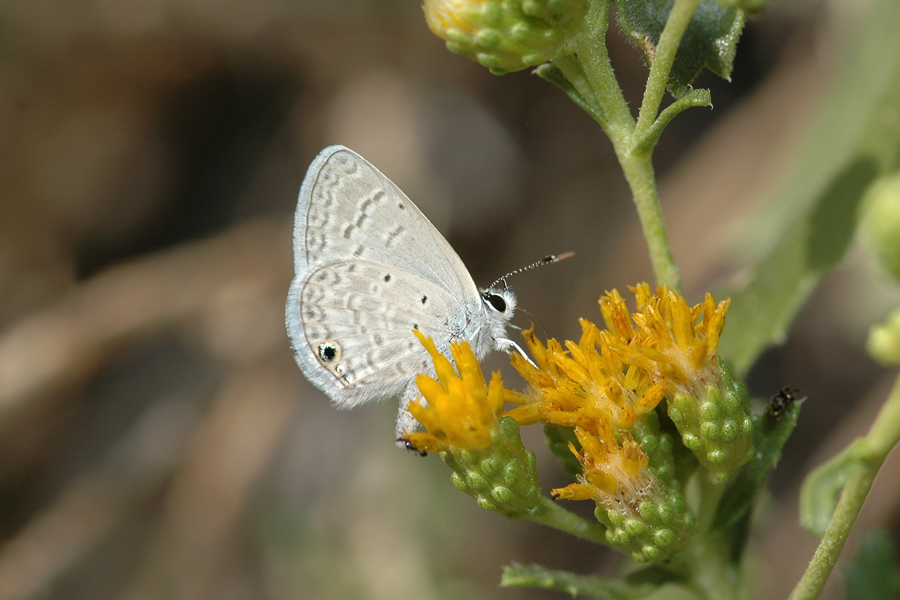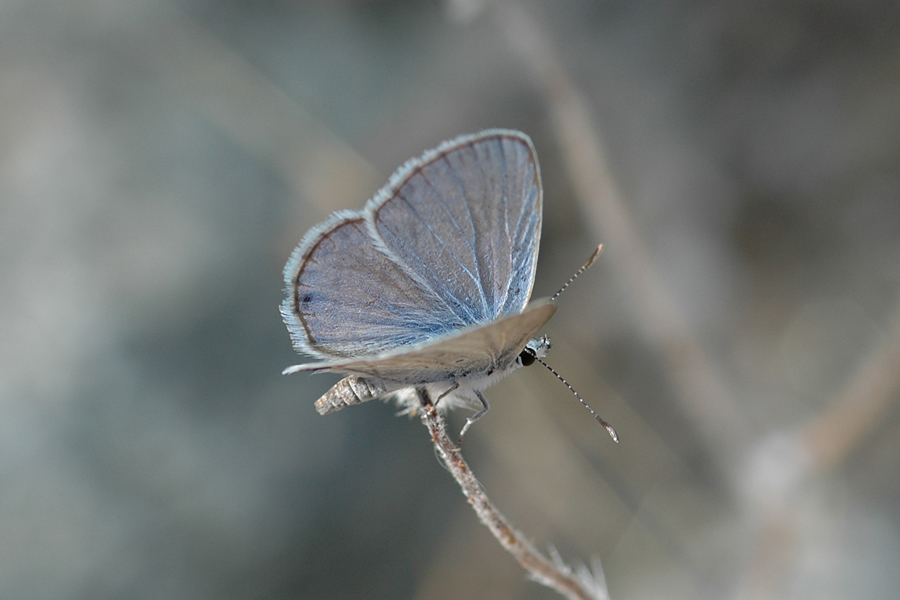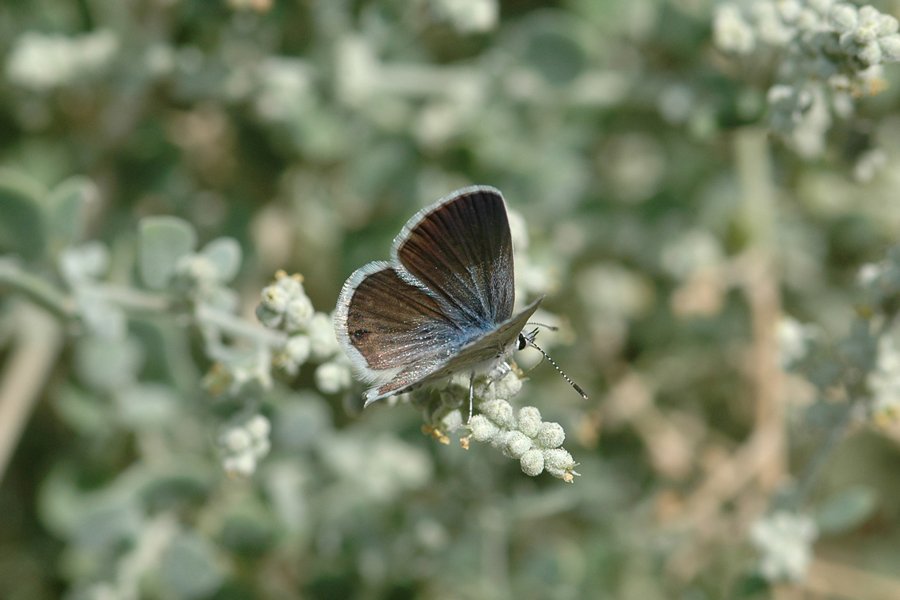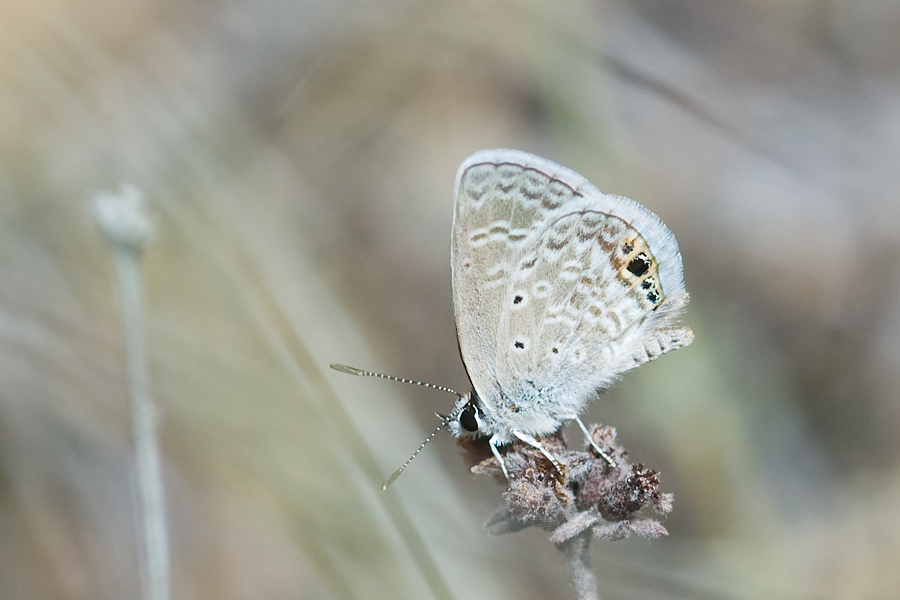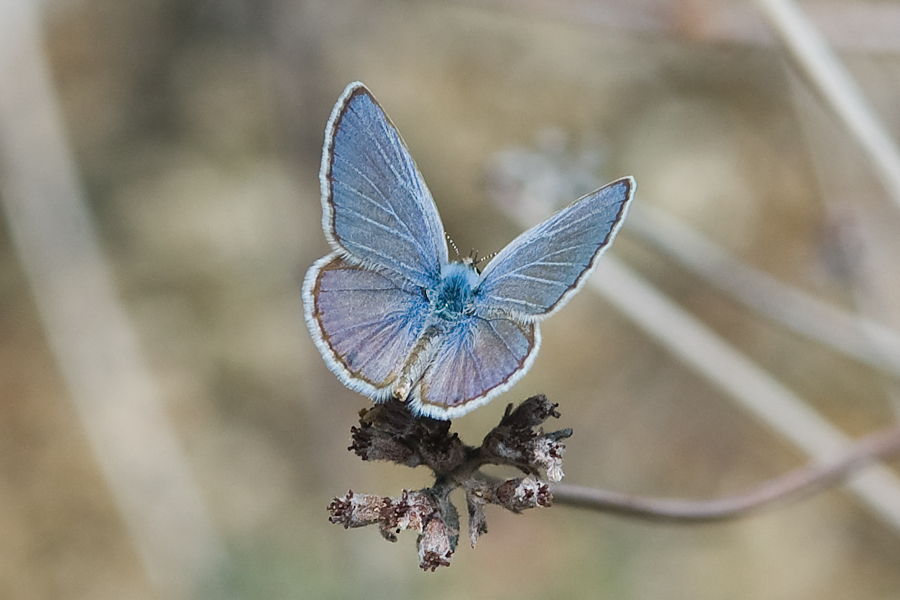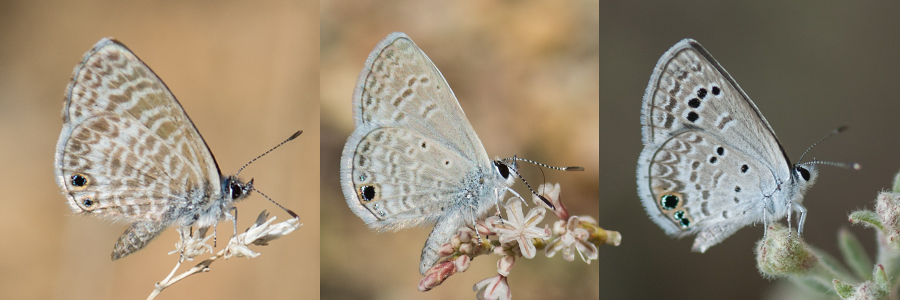Hemiargus ceraunus gyas
Ceraunus Blue
The ceraunus blue can be found much of the year, especially in the deserts where it uses mesquite, catclaw, and various rattlepods. It flies with - and resembles - Leptotes marina, but along the hind wing's upper edge, ceraunus has two dark spots that distinguish it from marina. Reakirt's blue may also be flying with either or both of these two, and it shares the two hind wing dots with ceraunus, but it is easily recognized by the row of dark macules on the forewing. I put a side-by-side illustration below.
This is a species of blue that will open its wings occasionally for patient photographers, as will Reakirt's and the marine blue.
Ventral of 'Edward's' subspecies of the ceraunus blue. Yaqui Well, Anza-Borrego Desert State Park, October 11, 2005.
Male ceraunus blue. Plum Canyon, Anza-Borrego, October 10, 2005.
Female Hemiargus ceraunus gyas, Boyce Thompson Arboretum in Arizona, September 25, 2007.
Another Hemiargus ceraunus gyas, this from Cactus Spring Trail in Riverside County, May 26, 2012.
Another male ceraunus blue. Same individual as above.
From left to right: Leptotes marina (marine blue); Hemiargus ceraunus gyas (ceraunus blue); and Hemiargus isola alce (Reakirt's blue). Marina lacks the two hind wing spots on the upper margin of the other two, and only Reakirt's has the row of black dots that are a prominent feature of the forewing.
©Dennis Walker
